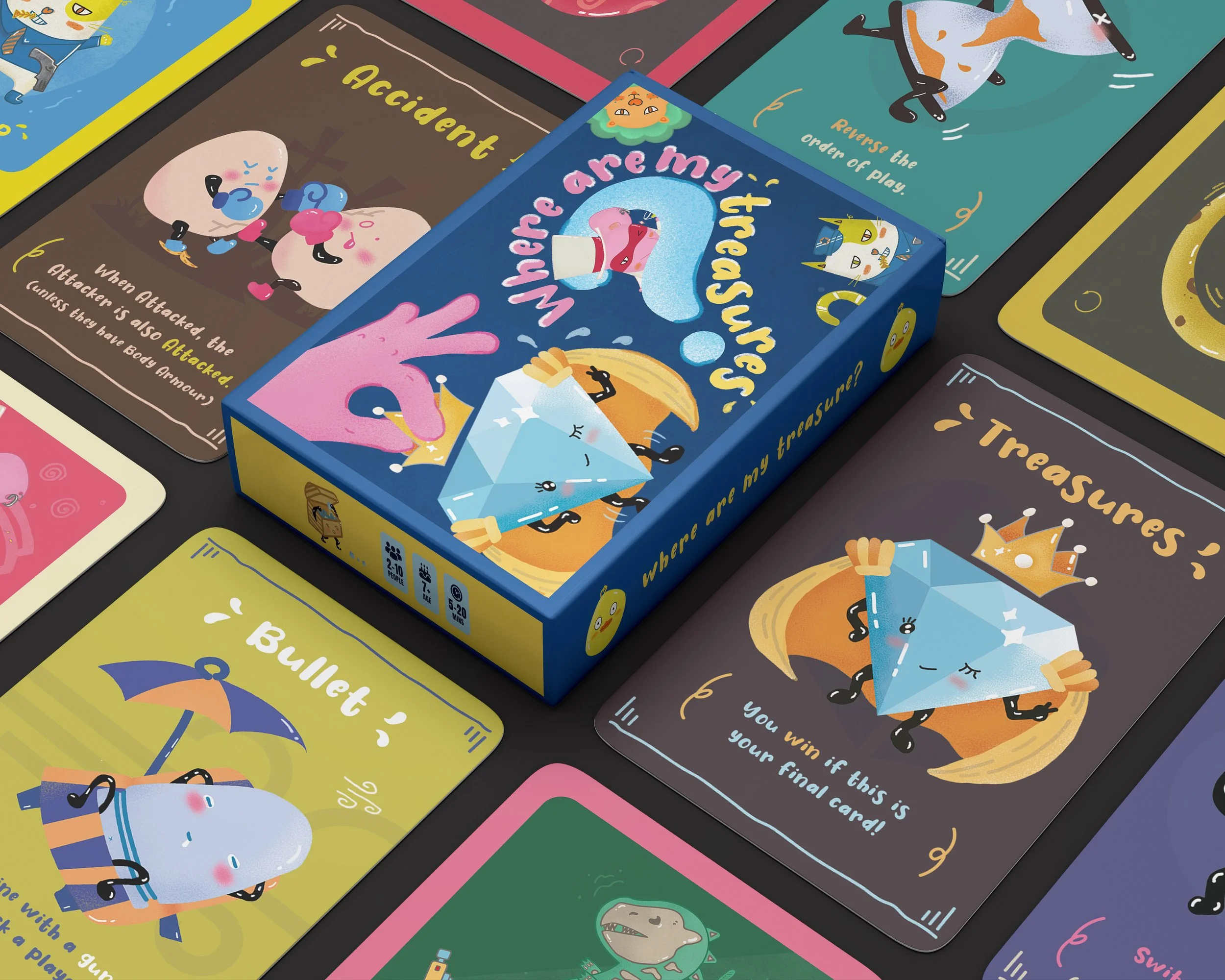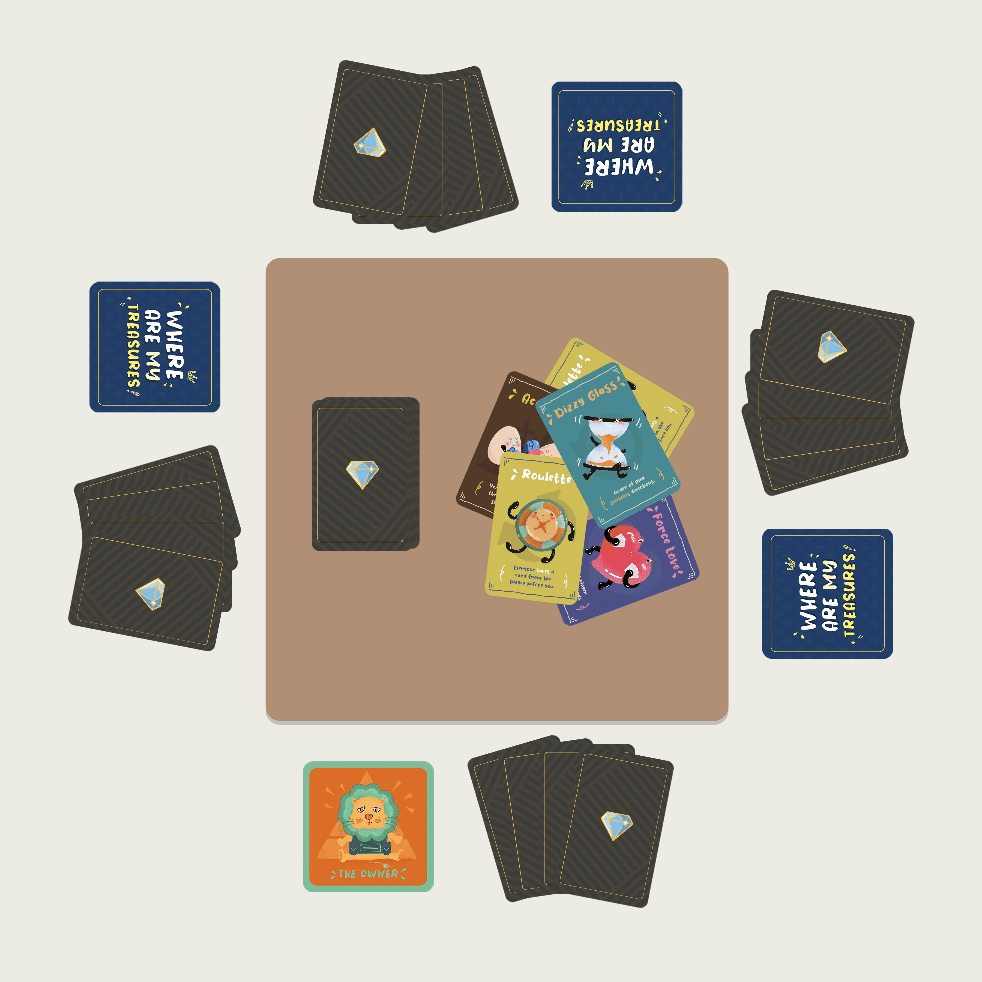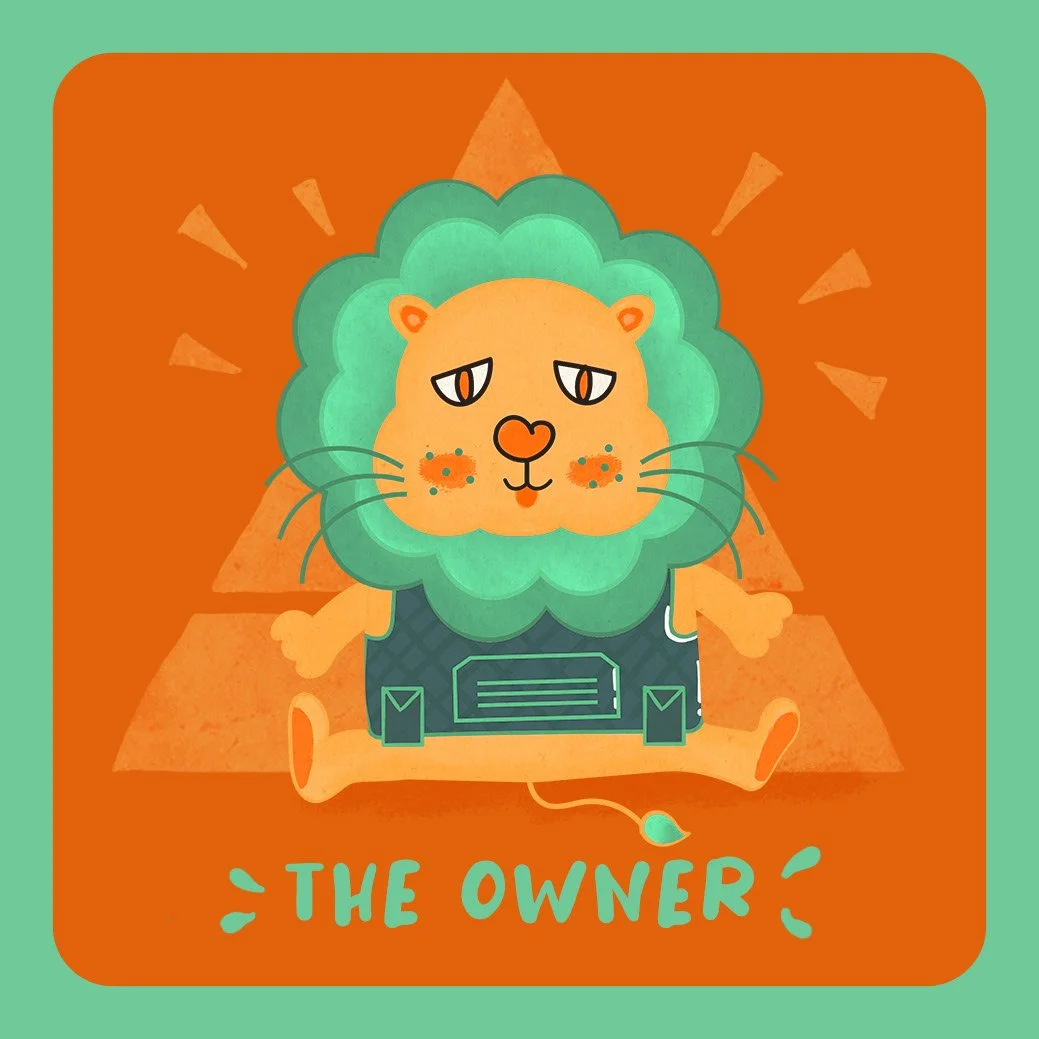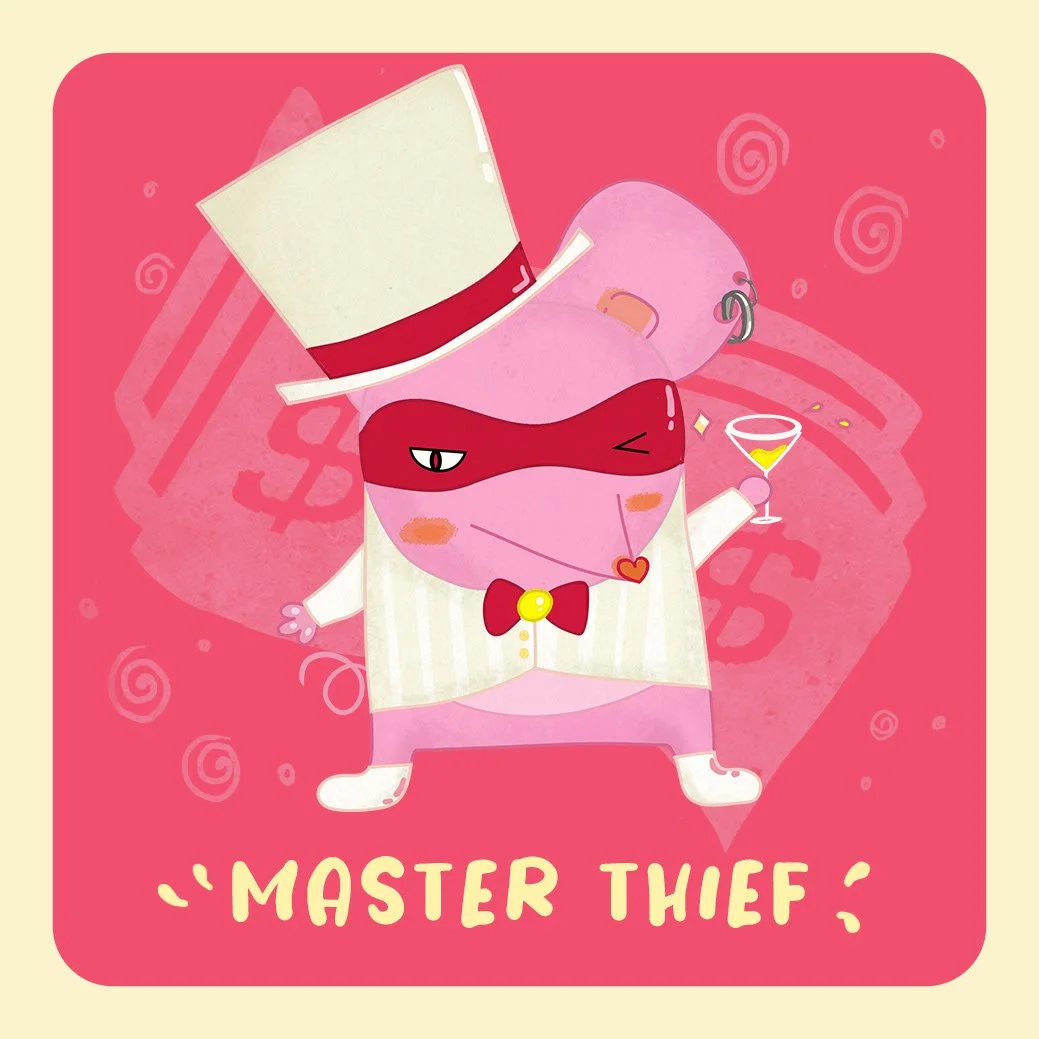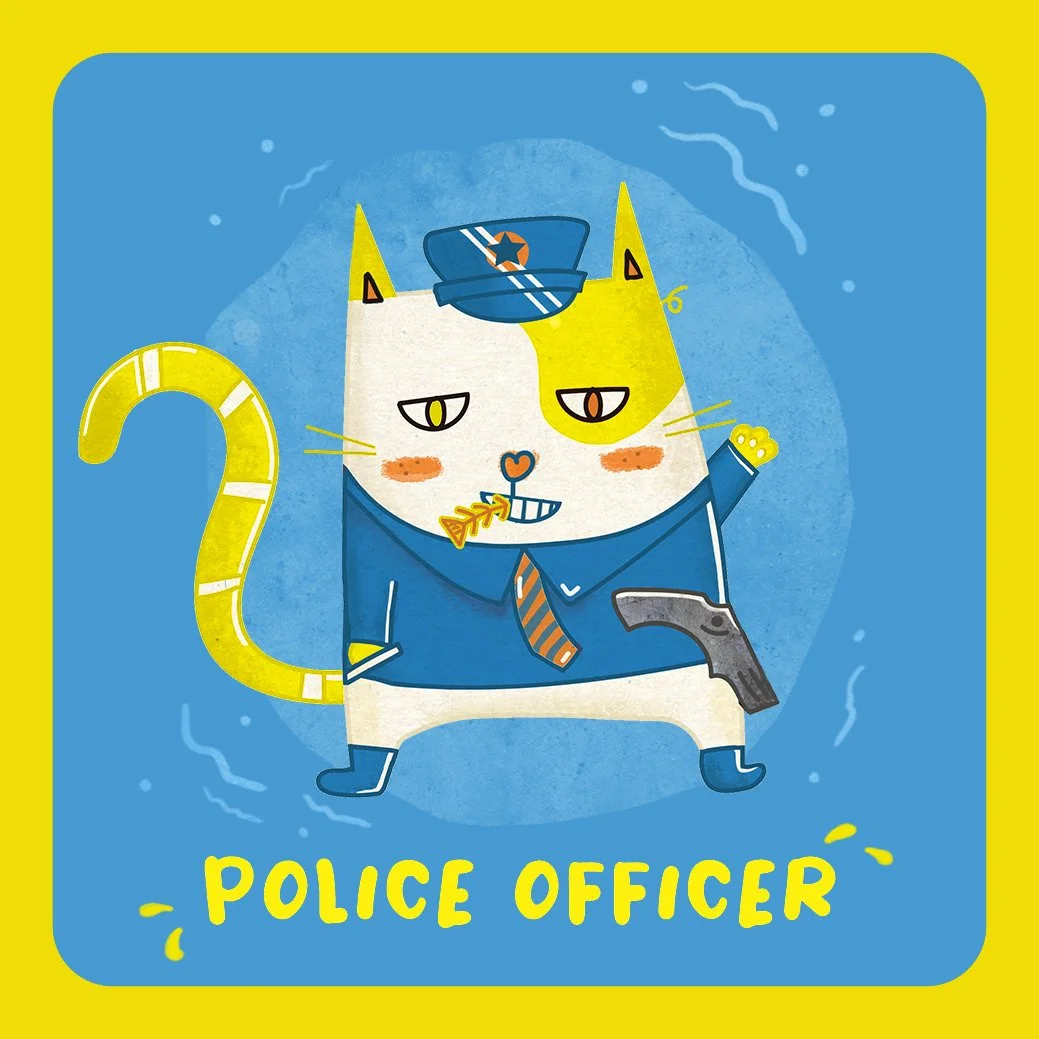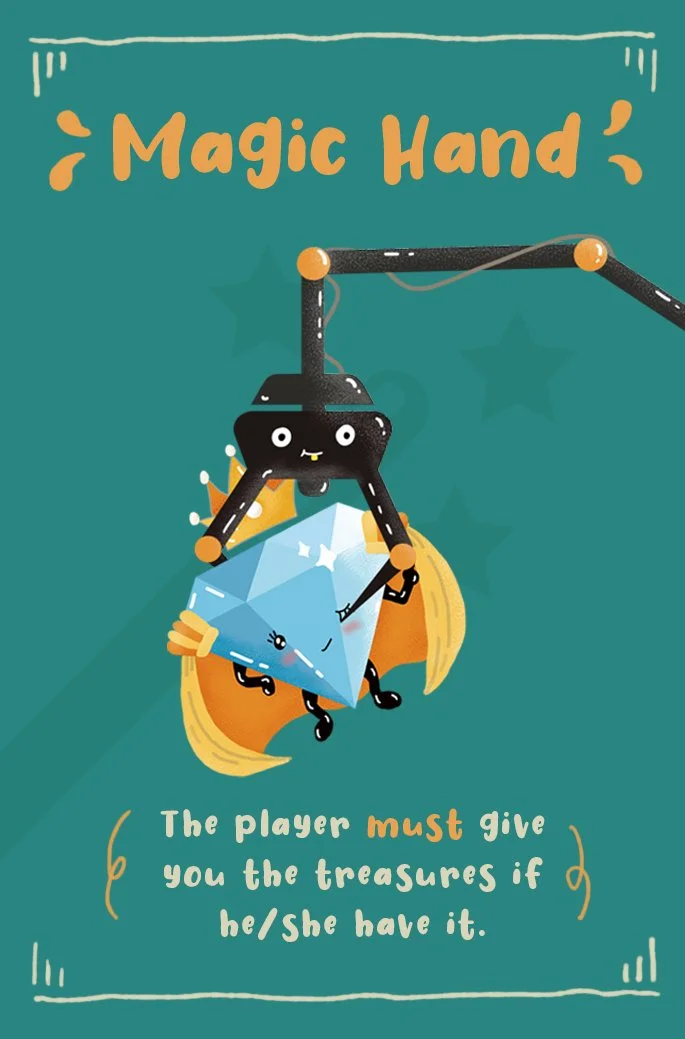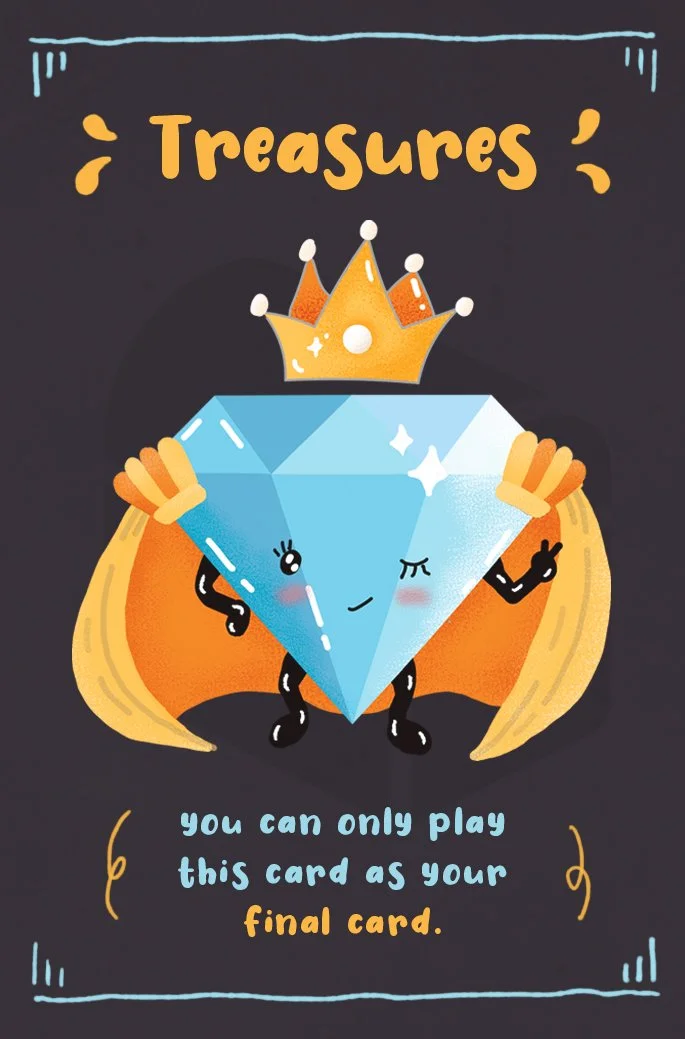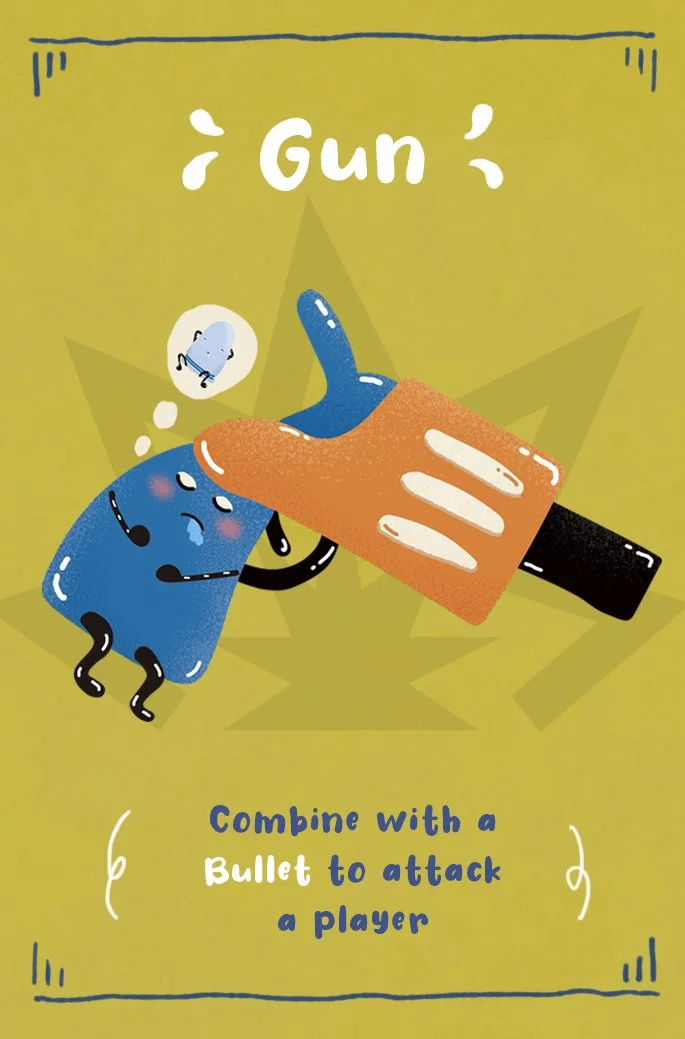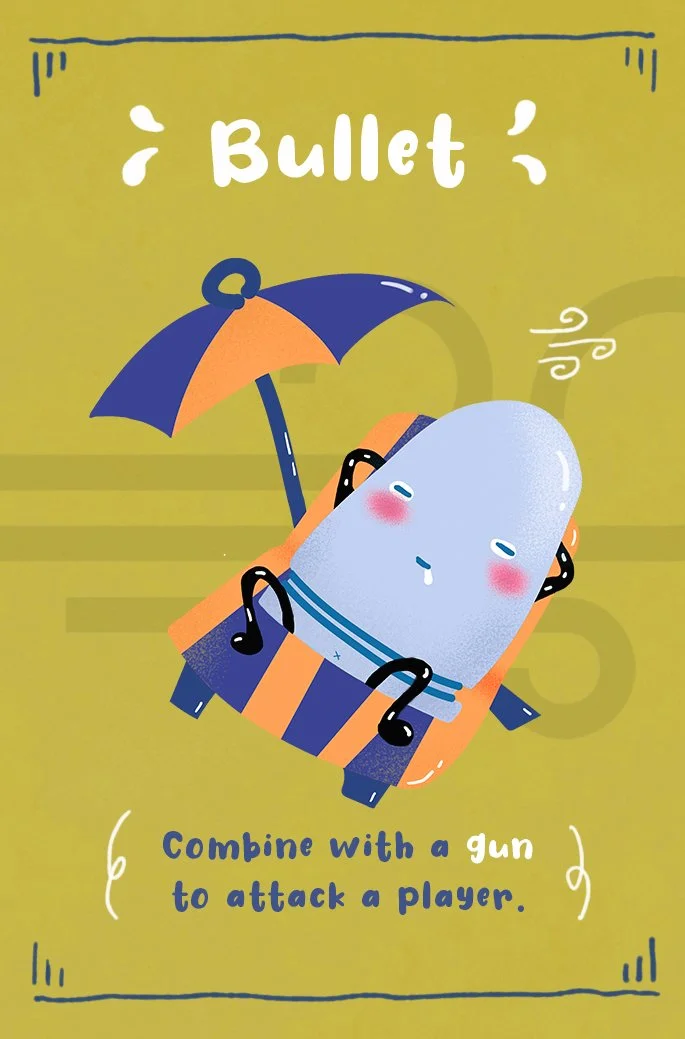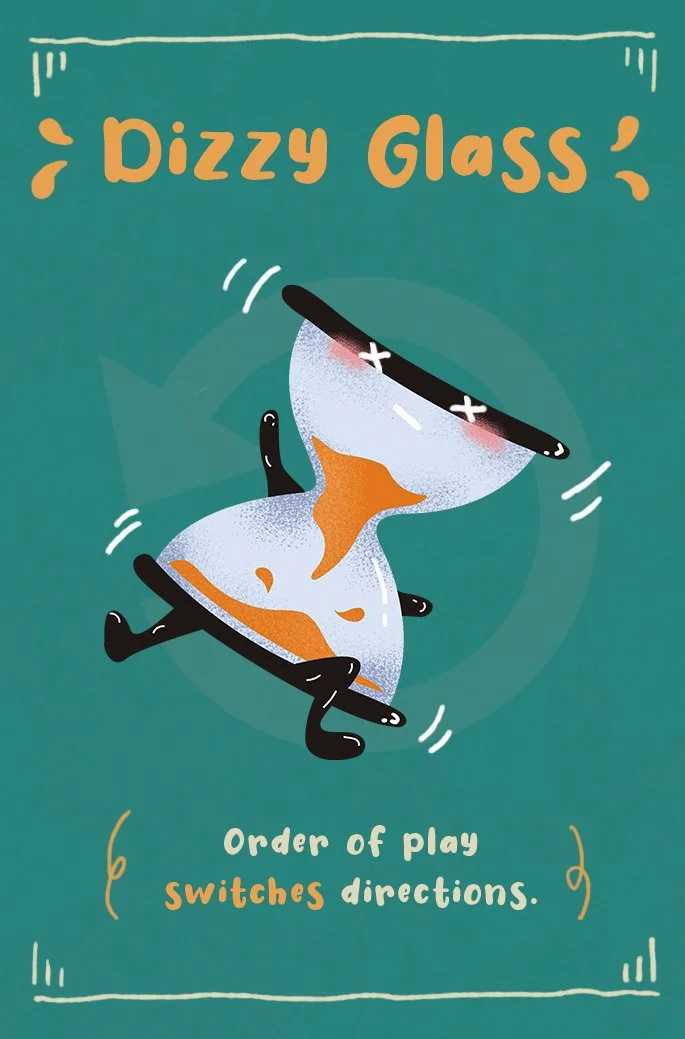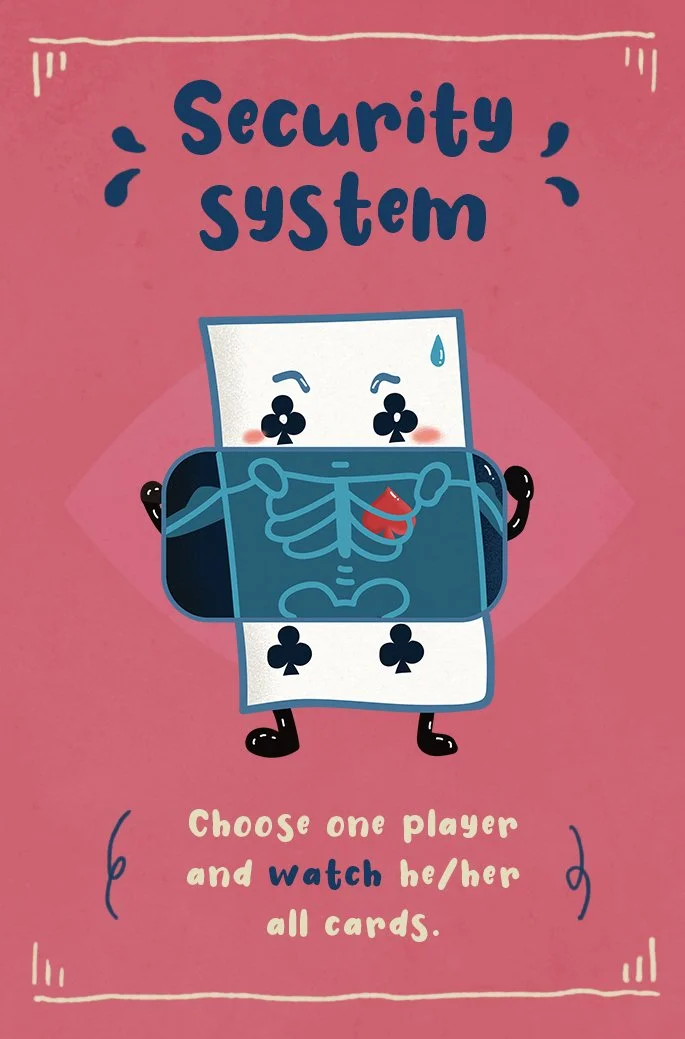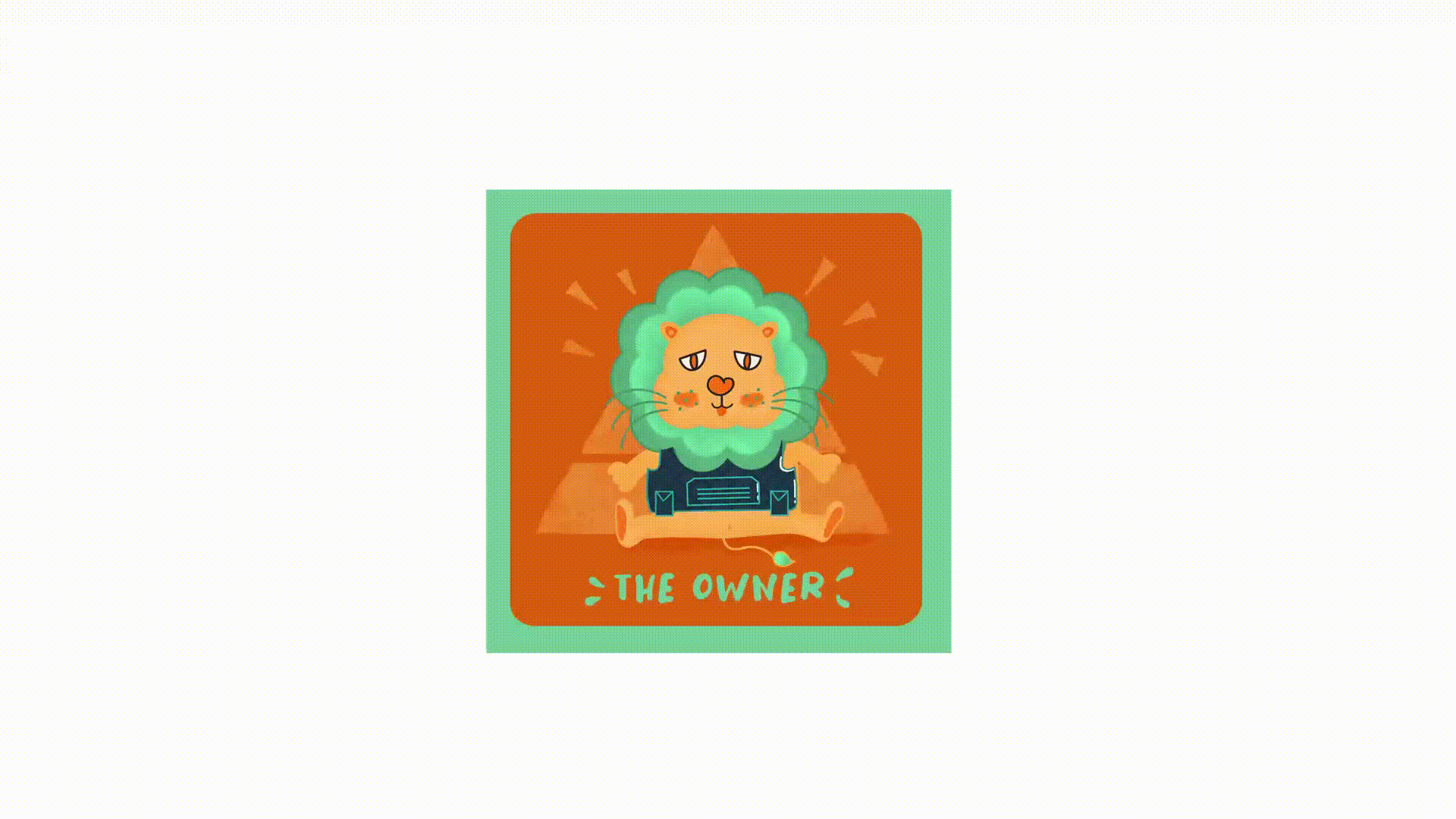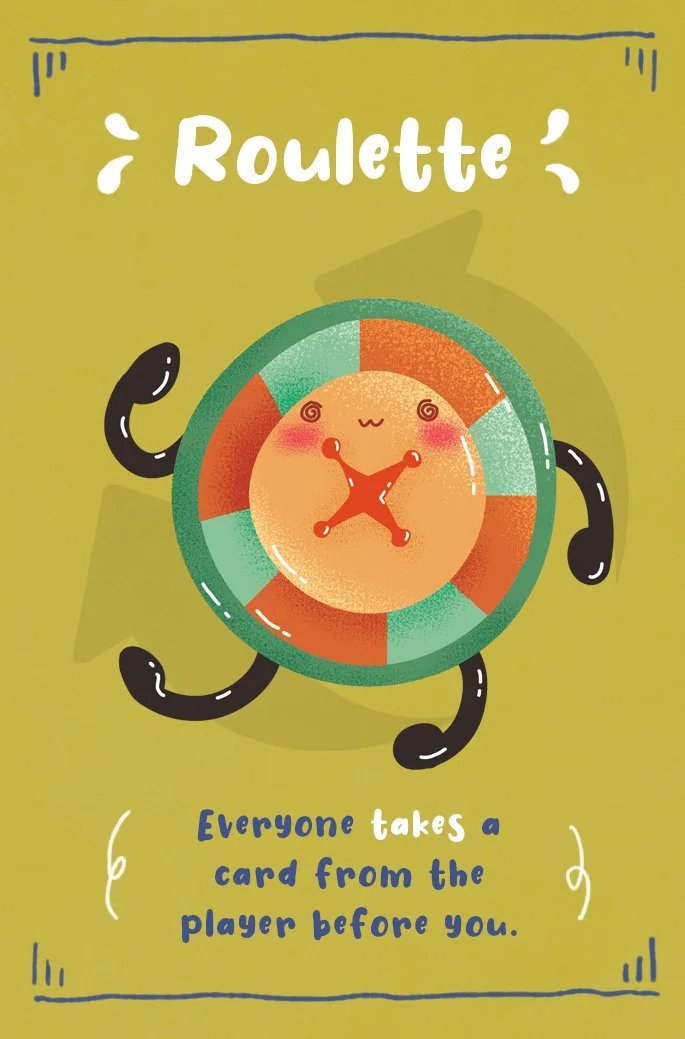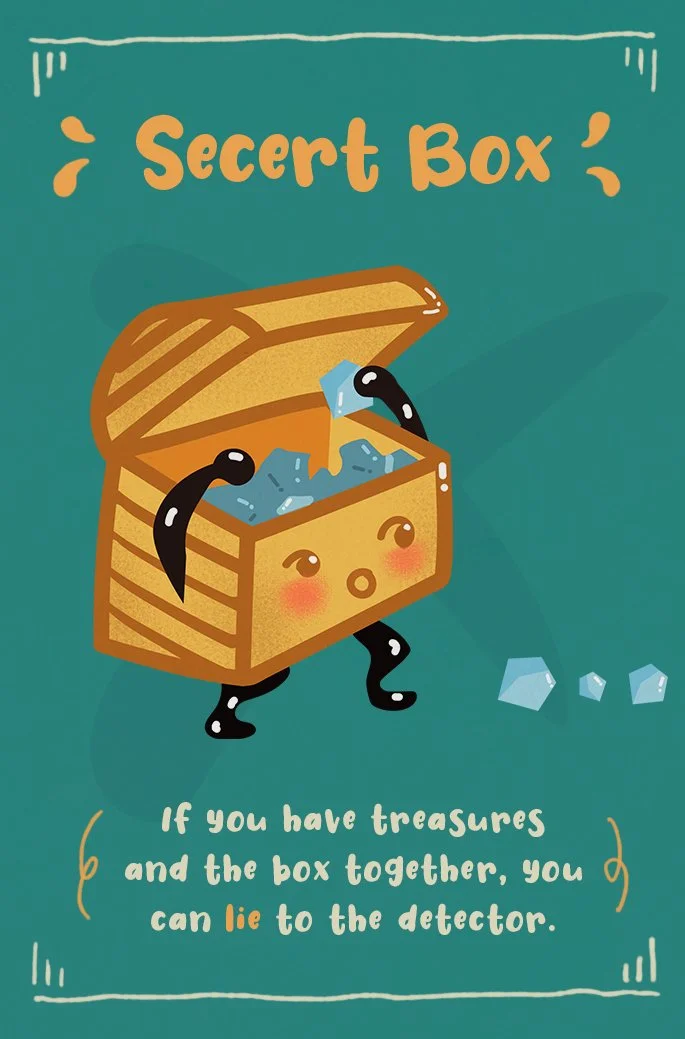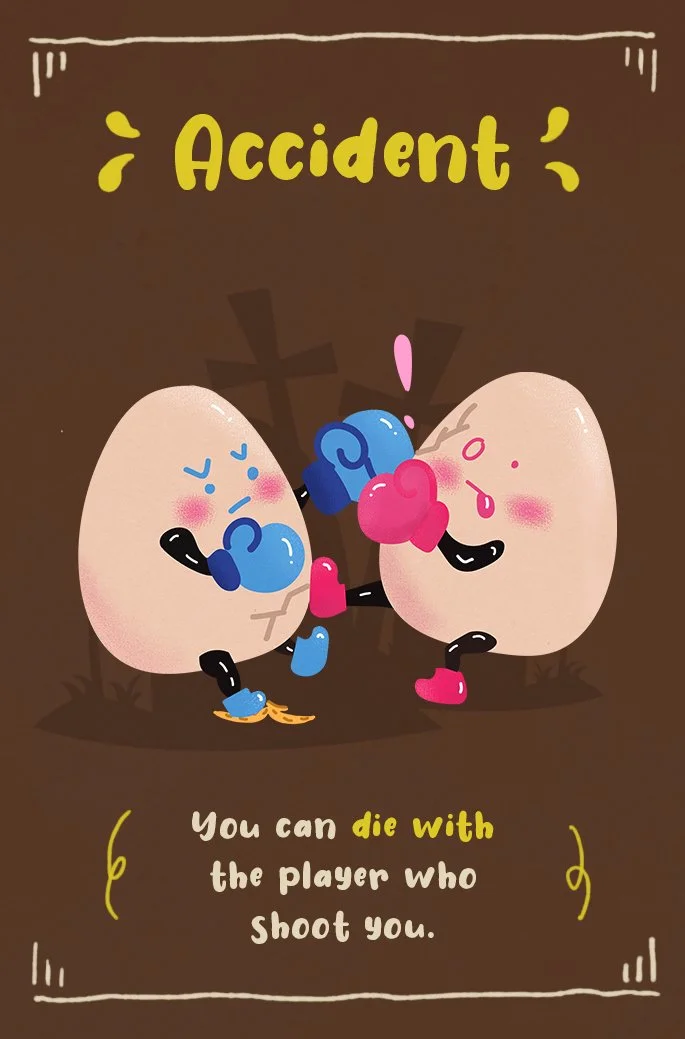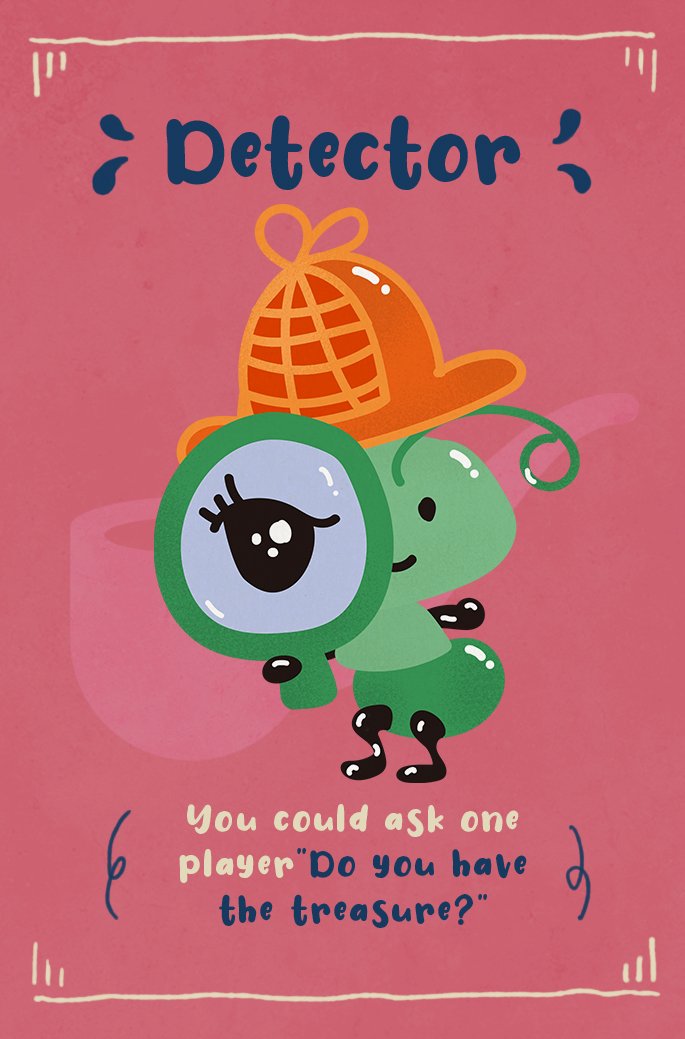Where are my treasures?
A Family-Friendly Strategy Board Game
Overview
Why Card Game?
User Analysis
Persona
Challenge 01
Solution
Challenge 02
Solution
Impact
Reflection
Future Updates
The Challenge
During the 2020 pandemic, increased family time at home led us to design a board game called "Where Are My Treasures?" that suits all ages. How did we design a game that appeals to both kids and adults?
The Solution
Children are drawn to colorful, simple games, while adults seek strategic depth and entertainment. To meet these needs, we simplified the rules with detailed illustrated guides, introduced random events and multiple endings to keep the game exciting, and designed interactive cards to foster player engagement and strategic competition. These elements combined to create a game that captivates both children and adults.
My Roles
User Research
Ideation
Game Design
Illustration
The "Owner" card starts the game with two lives; when attacked, it loses its bulletproof vest, representing the loss of one life.
C. Incorporate Advanced Rules
Included optional advanced rules for adults that introduce deeper strategic elements without overwhelming younger players.
For instance, we modified the game mechanics so that instead of a single card being able to attack, the "Gun" card must be paired with a "Bullet" card to perform an attack, adding layers of strategy
Team
Lin Miao
Chenjing An
Client
Gooduck Games
Game Design and Crowdfunding Success
This video introduces the overall design concept and gameplay of the game. "Where Are My Treasures?" successfully crowdfunded on Kickstarter and was sold to seven countries worldwide.
Card Design
The card design for "Where Are My Treasures?" was essential for making the game engaging and accessible, based on very simple rules. We used vibrant illustrations to attract younger players and clear icons for easy understanding. Various card types, such as action and character cards, were introduced to add strategic depth and variability. This design encouraged creative thinking and interaction among players.
Action Cards
Timeline
6 weeks
March 2020
-April 2020
Character Cards
The "Night of the Museum" card shows a dinosaur struck by lightning when identified, inspired by "Night at the Museum." The fun design matches character cards and visually indicates its role in identifying character cards, making it easy for children to understand just by looking at the illustration.
Clockwise & Counterclockwise
Why We Chose a Card Game?
We chose to design a card game due to its portability, easy-to-learn rules, and high replayability. Card games don't require much space, making them perfect for families to play anywhere. Simple rules allow players of all ages to quickly grasp the game, while various card types (such as action and character cards) add strategic depth and interactivity. This ensures that each playthrough is fresh and challenging, meeting the needs of both children and adults.
Like a deck of playing cards, simple cards offer numerous gameplay options, suitable for everyone.
6 Pain Points of Board Games for Different User Groups
After interviewing several families and gaming enthusiasts, and reviewing feedback from various gaming platforms, we identified these common pain points associated with traditional board games.
Complex Rules
The "Security System" card features an illustration of a playing card viewed through
an X-ray, clearly indicating its function to reveal opponents' hands.
Lengthy Playtime
Large Space Requirement
Physical Dexterity
Name: Emma and her Son
Age: 35 & 7
“We love playing board games, but many have rules that are too complex for our kids to understand.”
Needs:
Simple
Vibrant illustrations
Engaging interactive elements
Portability
Name: John
Age: 35
“We live in a small apartment, and traditional board games require too much space to play.”
Needs:
Quick-to-learn yet strategically deep games
Portable design
Diverse gameplay
Lack of Reversals
Name: Mary
Age: 68
“Some board games require good hand dexterity, which is challenging for us.”
Needs:
Easy-to-remember rules
Interactive games suitable for family participation
Space-saving design
How can we design a game that's easy for children to understand yet complex enough to captivate adults?
Designing a game that appeals to both children and adults presents a unique challenge. Children need straightforward, colorful, and easy-to-grasp games, while adults seek depth, strategy, and complexity. Balancing these requirements is crucial to creating a game that can be enjoyed by the whole family.
A. Identify the Core Needs
We recognized the need for simplicity for children and strategic depth for adults. By analyzing existing games, such as "Uno" for its simplicity and "Settlers of Catan" for its strategic depth, we identified key elements that worked well for both demographics.
B. Develop Base Rules and Fun Illustration
Created simple, straightforward rules that are easy for children to grasp and used engaging illustrations to help children understand each card without reading text.
By following these steps, we successfully created a game that is easy for children to understand while providing enough complexity to captivate adults. This ensures both accessibility and engagement across different age groups, making the game enjoyable for the whole family.
How can we ensure the game remains exciting and engaging after multiple playthroughs?
Maintaining the game's appeal over multiple playthroughs is a significant challenge. Traditional board games can become predictable and lose excitement after several rounds, reducing player engagement.
A. Introduce Dynamic Game Mechanics:
Included random events and various game endings to ensure unpredictability.
The "Magic Hand" card allows players to directly steal the opponent's treasure
Combining action cards like “Force Love” and “Black Market” to add complexity and strategic depth.
D. Create and Test Varied Card Types:
Developed various card types, such as action and character cards, which can be combined in multiple ways to create complex strategies. Conducted extensive playtesting with both children and adults to gather feedback.Continuous feedback loops from playtesters helped refine the rules and card designs to balance simplicity and depth effectively.
Designed special action cards like “Dizzy Glass” and “Roulette” to create opportunities for comebacks and dramatic turns.
B. Enhance Replayability:
Added elements that change the dynamics of each game, ensuring no two games are alike.
Used interactive elements like “Secert Box” and “Accident” cards to enhance player interaction and strategy.
C. Promote Interaction:
Encouraged player interaction through card mechanics that foster engagement and competition.
The "Detector" card allows players to ask other player “Do you have the treasure?”, encouraging strategic moves and counterplays. The "Magic Hand" card allows players to directly steal the opponent's treasure, adding an element of surprise and strategy.
By implementing these dynamic and interactive elements, we ensured that "Where Are My Treasures?" remains exciting and engaging even after multiple playthroughs, providing a fresh and enjoyable experience every time.
"Where Are My Treasures?" aims to create a cohesive gaming experience that bridges the gap between different age groups. By integrating simple rules with strategic depth, we designed a game that not only entertains but also fosters family bonding and social interaction. The positive reception during testing indicates that the game can enhance quality family time and provide a refreshing alternative to digital entertainment. We hope that this game will not only bring joy to families but also inspire other game designers to create inclusive and engaging board games.
Balancing complexity and simplicity.
Creating a game that is simple enough for children yet complex enough to engage adults required careful design choices. For instance, we changed the original setup where a single card could attack to a system where a "Gun" card must be paired with a "Bullet" card to perform an attack. This change added a layer of strategy and planning that appealed to adult players while remaining simple enough for children to follow. This balance was crucial in maintaining the game's appeal across different age groups.
Ensuring accessibility and engagement.
Ensuring that "Where Are My Treasures?" was accessible to players of all ages was a top priority. We focused on clear visual design and straightforward rules that children could easily understand without needing to read complex instructions. This approach was validated through our playtesting, where younger players could grasp the gameplay quickly and enjoyed the colorful illustrations. Additionally, incorporating feedback from adult players helped us add layers of strategy that made the game engaging for them as well.
Adapting based on feedback.
Throughout the development process, continuous feedback from playtesters was invaluable. We learned the importance of being adaptable and open to changes. For example, incorporating the "Magic Hand" card, which allows players to directly steal an opponent's treasure, added an element of surprise and strategy that enhanced the game's excitement and engagement. This willingness to adapt based on feedback ensured the game remained fresh and enjoyable after multiple playthroughs.
To ensure "Where Are My Treasures?" continues to engage and entertain players, future updates will focus on expanding the game's content and enhancing its replayability. We plan to introduce new card types and special abilities, offering fresh strategies and challenges. Additionally, we aim to develop expansion packs with new themes and mechanics to keep the game exciting for returning players. Incorporating feedback from the gaming community will be crucial in refining these updates and maintaining the game's appeal across all age groups.
